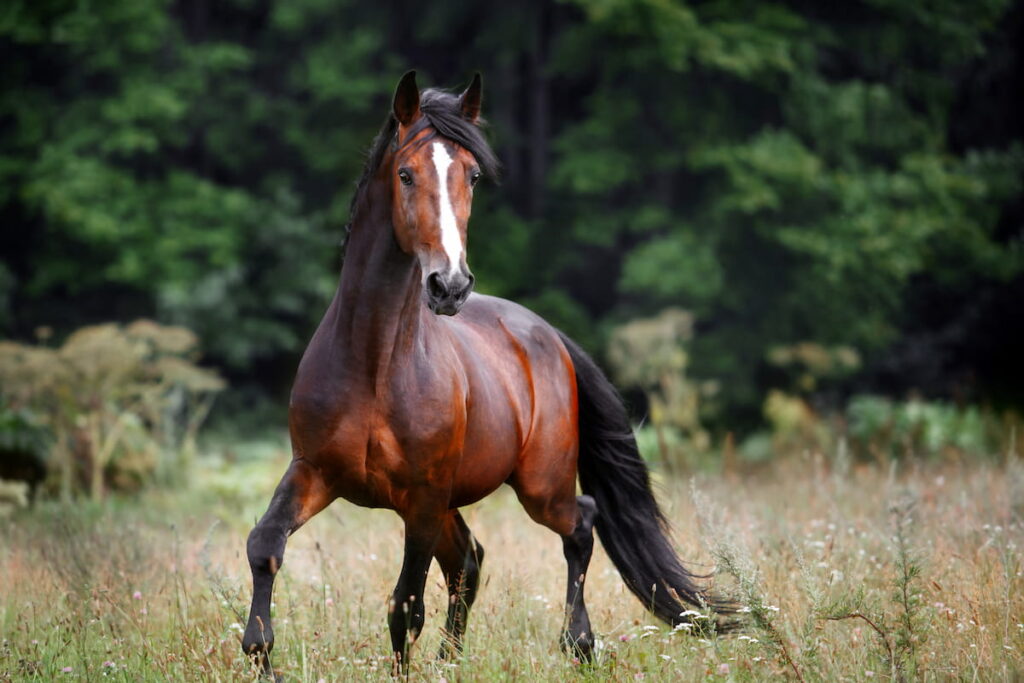
What’s a Bay Horse – Unraveling The Breed
A bay horse, a term often heard but seldom understood. What makes this equine color so special, and why does it capture the fascination of horse enthusiasts and novices alike?
Think of the rich, reddish-brown coat kissed by the sun, contrasted with a mane and tail as dark as midnight.
It’s not just about appearance; there’s a science and history behind it. From genetics to symbolism, the bay horse is more than a simple hue. It’s a blend of nature’s artistry and biological wonder.
Curious to know more? Let’s embark on a journey to unravel the mystery of the bay horse, where every stride reveals a new discovery.
Whether you’re an equestrian expert or just dipping your toes into the world of horses, this exploration promises to be an enlightening ride.
Definition of a Bay Horse
A bay horse is more than just a color; it’s a term that defines a specific coat color in horses. With a body color that ranges from a rich reddish-brown to a dark brown, bay horses have black “points” or markings on their mane, tail, ear edges, and lower legs. Among the unique bay horse names, you might find monikers that reflect their distinctive appearance or heritage.
- Color Variations: Bay horses can have various shades, but the black points are consistent.
- Genetics Behind the Color: The bay color is dominant, meaning that it often prevails over other color genes.
Brief History and Origin
The bay horse’s coloration has a rich history, tracing back to ancient times.
- Ancient Depictions: Artifacts and paintings from various civilizations depict bay horses, signifying their historical importance.
- Selective Breeding: Over time, the bay color was favored and selectively bred for in many cultures.
Importance in Equine Culture
The bay horse holds a special place in equine culture and is often associated with strength, reliability, and beauty.
- Symbolism: In literature and folklore, bay horses often symbolize nobility and valor.
- Famous Bay Horses: Many renowned horses in history were bay, including some famous racehorses and warhorses.
- Cultural Impact: Different cultures have revered the bay horse for its unique color and attributes.
So, what sets a bay horse apart from other horses? Is it merely the color, or is there something more profound? The answer lies in the combination of its unique color, historical significance, and cultural symbolism.
This intriguing blend makes the bay horse not just a visual marvel but a fascinating subject in the equine world.
Characteristics of a Bay Horse
Color and Appearance
- Color: A Bay Horse is typically characterized by a rich reddish-brown body color. But what makes it stand out?
- Shine: The coat often has a lustrous shine, giving the horse a majestic appearance.
Coat Color Variations
- Standard Bay: A deep reddish-brown with black mane and tail.
- Light Bay: A lighter shade, almost tan, with dark points.
- Dark Bay: Almost black but with a brownish hue. Confusing, isn’t it?
Mane and Tail Features
- Mane: Usually black, but can vary.
- Tail: Black and often long and flowing. Ever wondered how they keep it so beautiful?
Physical Attributes
- Musculature: Strong and well-defined, suitable for various equestrian activities.
- Eyes: Expressive and alert, reflecting the horse’s intelligent nature.
Size and Build
- Height: Varies by breed, generally ranging from 14 to 16 hands.
- Build: Athletic and graceful, yet robust.
How Bay Horses Differ from Other Horses
Comparison with Other Color Types
- Chestnut Horses: Unlike the rich red-brown of chestnut horses, bay horses have a brown body with black mane, tail, and points. Isn’t it fascinating how two colors can create such distinct appearances?
- Black Horses: Black horses are entirely black, while bay horses have a brown body. Think of the bay horse as wearing elegant black gloves on its legs!
- Grey Horses: Grey horses may start dark and become lighter with age, but bay horses retain their unique coloration.
- Genetic Factors: The bay color is dominant in horse genetics. It’s like having a special key that unlocks a treasure chest of beautiful shades.
Conclusion
The bay horse, with its rich reddish-brown coat and black mane, tail, and lower legs, is more than just a color variation; it’s a symbol of elegance and strength in various cultures.
Understanding the genetic factors that lead to this distinct coloring helps breeders and horse enthusiasts alike.
The bay horse’s popularity among equestrians is not just for its striking appearance but also for its unique traits that make it stand out. From its historical significance to its role in modern equestrian practices, the bay horse continues to intrigue and inspire.
Whether you’re a horse lover or simply curious about this magnificent creature, delving into the world of bay horses offers a fascinating glimpse into a blend of science, history, and artistry. It’s a journey that enriches our appreciation for one of nature’s most beautiful and enduring symbols.







